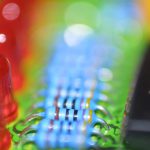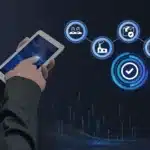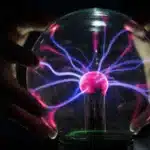Introduction
The rapid rise of urbanisation has led to the development of smart cities that rely on advanced infrastructure, connected devices, and the Internet of Things (IoT). Smart cities aim to enhance efficiency and improve the quality of life for their inhabitants. One of the key technologies aiding this transformation is beacons, which have a significant impact on how cities function. This article explains the potential role of beacon light technology in smart cities, its benefits, and its versatile applications.
Understanding Beacon Lights: How Do They Work?
Beacon lights, also called beacons or warning beacons, are small wireless devices that continuously transmit signals via Bluetooth Low Energy (BLE). These devices emit light to attract attention or convey essential information. The generated signals can be picked up by smartphones, tablets, or other Bluetooth-enabled devices within a certain range. Beacons are designed to enhance connectivity in smart cities, enabling better interaction between citizens and city services. A beacon light comes with multiple lighting and other technologies, including LED lights, sensors, and communication capabilities. In the context of smart cities, beacon lights serve various functions, from traffic management to public safety and environmental monitoring.
Beacon lights function as BLE transmitters that constantly emit signals within a specific range. The transmitted signals carry unique identifiers that allow devices within range to detect their proximity. These devices, in turn, respond by performing predetermined actions such as sending notifications, triggering data exchanges, or guiding users via location-based services.
Standard Types of Beacon Lights Used in Smart Cities
Beacons are classified into several types based on the lighting sources, mechanism, power sources, and other features. Among them, LED beacon lights, strobe beacons, rotating beacons, solar-powered, programmable beacons, and smart beacon lights are widely used. Additionally, beacons come in different forms based on their lighting and colour variations, such as a blue flashing beacon and a green flashing beacon. Some of the widely used beacons in smart cities include:
- iBeacon – Developed by Apple, iBeacon is one of the most widely adopted beacon technologies. It works with iOS devices and other BLE-compatible devices to transmit a unique identifier to nearby mobile devices. iBeacons trigger location-based actions and are commonly used in public spaces, retail, museums, and smart home environments.
- Eddystone – Eddystone is an open-source beacon format developed by Google. It supports Android and iOS and offers cross-platform compatibility and enhanced integration with Google’s ecosystem. Eddystone is popular for web-based interactions, especially in location-aware services and IoT environments.
- AltBeacon – AltBeacon is an open-source beacon protocol from Radius Network that provides a more accessible alternative to iBeacon. It allows greater flexibility and customisation in smart city applications.
The Role of Beacon Technology in Enhancing Urban Efficiency
Smart cities rely on real-time data to optimise resources and improve urban life. Beacon lights, when placed strategically across a city, provide continuous updates on traffic flow, air quality, public transportation, and emergency services. These lighting devices contribute significantly to improving urban efficiency:
Smart Traffic Management
By installing beacon lights on roads, traffic lights, and vehicles, smart cities can collect real-time data on traffic density and patterns. This data helps optimise traffic signal timing, reduce congestion, and improve the overall vehicle flow through urban areas. In addition, beacons can also assist in developing smarter navigation systems, directing drivers to less congested routes.
Optimising Public Transport
Beacons can optimise public transport by providing better services to passengers. They allow transport operators to track bus and train locations in real-time. They can adjust schedules based on demand and send alerts to passengers about delays or route changes. For citizens, beacon lights provide real-time updates about the nearest available buses, subway trains, or bike-sharing stations, making commuting more seamless.
Beacon Lights in Urban Security: Enhancing Safety within Smart Cities
Beacon lights can significantly enhance safety and security within smart cities. They can facilitate faster response times for emergency services and improve communication during critical incidents. Some of the crucial roles in this context include:
Improving Emergency Response Systems
Beacon lights are crucial in improving the efficiency of emergency response systems. By installing within critical points across the city, they allow first responders to pinpoint the exact location of an emergency with robust accuracy. Beacon light technology reduces the time taken to arrive at an emergency site, whether it’s a fire, medical emergency, or crime scene, thereby saving lives.
Transmission of Public Safety Notifications
Beacons provide a reliable and direct way to communicate with the public during a crisis. In the event of natural disasters or other public safety threats, beacon lights transmit location-based notifications directly to citizens’ smartphones. This could include evacuation instructions, shelter locations, or emergency contact numbers.
Beacon Light Technology in Enabling Smarter Infrastructure
Beacon lights are integral to the development of smart infrastructure in cities, from buildings to streetlights and utilities. They can assist in the following ways:
Enabling Smart Lighting Systems
Beacons-driven smart lighting systems are a significant component of energy-efficient urban environments. These lights can automatically adjust their brightness based on time of day, traffic flow, or weather conditions, helping cities reduce energy consumption and costs. Additionally, these warning beacons can also detect when maintenance is required, sending alerts to city authorities to replace faulty lights before they become a safety hazard.
Beacon-Based Wayfinding
Beacon lights can assist with wayfinding in large public spaces like airports, malls, and train stations. They provide step-by-step navigation to help individuals find their way more easily. This technology is especially beneficial for visually impaired individuals, offering audio guidance and instructions on smartphones.
The Significance of Beacons in Retail and Commerce
Smart cities also aim to enhance citizens’ quality of life through advanced retail and commerce experiences. Beacon lights provide new opportunities for businesses to engage with customers and offer personalised services.
Proximity-Based Marketing
Retailers and restaurants can leverage beacon technology to send personalised offers and discounts to customers who are near their locations. By utilising proximity-based marketing, businesses can engage with potential customers at the right moment, increasing foot traffic and improving sales.
Beacon lighting technology can offer customers indoor navigation in large shopping malls. Visitors can find specific stores, restrooms, or exits more easily through their mobile devices, enhancing the shopping experience.
Final Thoughts
Beacon lights are rapidly becoming a cornerstone of smart cities. Their ability to enhance traffic management, improve public safety, optimise infrastructure, and support sustainable initiatives makes them a vital technology of modern urban planning. By providing real-time data, improving connectivity, and enabling smarter services, beacons are helping cities become more efficient, responsive, and sustainable.





















